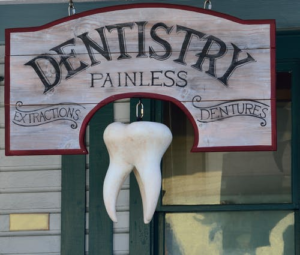Do you have mercury fillings? Read below to find out about mercury fillings and the association with toxicity and the impact on health.
Toxins are substances that act as a poison. There are two types of toxins; external toxins (drugs, chemicals, etc) and internal toxins (mercury fillings, dental and medical metals, focal infections, etc). The single or combined toxicity can lead to issues in the digestive tract (inflamed or infected gut, poor nutrition/absorption) leading to defective detoxification in liver and kidneys causing a build-up of toxic load and weakening the immune system. This process eventually results in modern chronic disease.
Metallic mercury can be inhaled and absorbed through the alveoli in the lungs at 80% efficiency. It is the main route of entry of mercury into the human body, whereas the absorption of metallic mercury through skin or via the gastrointestinal tract is very poor. Animal studies have shown mercury released from amalgam restorations is absorbed and accumulated in various organs such as kidney, brain, lung, liver, gastro-intestinal tract, and the exocrine glands.

Metals and procedures used in dentistry produce toxins, for example the presence of mercury in amalgams, titanium in implants and the exposure of toxic chemicals like formaldehyde in root fillings. Mercury levels can be tested via breath, stool, blood and urine.
Amalgam fillings are made with a mixture of copper, silver, and mercury. Mercury can be dangerous as it binds with Sulphur in the body (essential for biochemical processes) and destroys the blood-brain barrier allowing different molecules to pass to the brain. In addition, mercury increase pro-inflammatory cytokines, interferes with intestinal nutrient transport, and depletes existing stores of essential antioxidants be destroying damaging free radicals in the body.
Dental toxicity, particularly mercury-based dental fillings have been linked to neurological problems (dizziness, ringing in the ears, headaches and tremors), cardiovascular (irregular heart beat, changes in blood pressure, pain/pressure in chest), respiratory (persistent cough, shallow/irregular breathing), immunological (allergies, swollen lymph node, asthma, sinusitis), infertility and autoimmune conditions such as Hashimoto’s Thyroid and Sjogren Syndrome. Unsurprisingly, mercury fillings have been linked to a host of other digestive diseases – including ulcerative colitis, irritable bowel syndrome and Crohn’s disease. Dental fillings can also trigger food allergies and sensitivities.
The most common symptoms of mercury toxicity are irritability, lack of energy, fatigue, nervousness, memory loss, anxiety and insomnia. Some individuals also experience oral cavity disorders including bleeding gums, loosening of teeth, excessive saliva, foul breath and ulcers of gums. The gastrointestinal effects of mercury toxicity are abdominal cramps, colitis and diarrhoea.
In the gut, mercury destroys epithelial cells in the stomach and intestine causing tiny holes in the lining, altering cell membrane permeability. The increase in permeability allows undigested proteins, food particles, toxins and pathogens to pass through the intestinal membranes and directly into the bloodstream, provoking an autoimmune response. To add to this, mercury causes mutation in the friendly intestinal bacteria which can disrupt
gut flora causing dysbiosis. Dental amalgams emit mercury vapor, that can leach into your bloodstream. Often those who remove amalgam fillings only have 50% removed as traces remain under composite fillings or inlays.
Recovery cannot happen unless toxic overload is identified and dealt with properly.
This article was written by our team of specialist therapists at Perfect Balance Clinic. If you would like more specific advice about how our team can help you with this condition or symptoms you may be having, please complete the contact form below and one of the team will get back to you shortly.
References
Munro-Hall, G. and Munro-Hall, L. (2009). Toxic Dentistry Exposed. 2nd ed. Bedfordshire: Graeme Munro-Hall.
Munro Hall Clinic. (2018). Mercury Free Dentistry | Non-Toxic Treatments | Munro Hall Clinic. [online] Available at: https://www.munro-hallclinic.co.uk/holistic-treatments/mercury-free-dentistry [Accessed 10 May 2018].
Pant, V., Rathore, M. and Singh, A. (2012). The dental amalgam toxicity fear: A myth or actuality. Toxicology International, 19(2), p.81.
Pleva, J. (1994). Dental Mercury — A Public Health Hazard. Reviews on Environmental Health, 10(1), pp.1-28.






